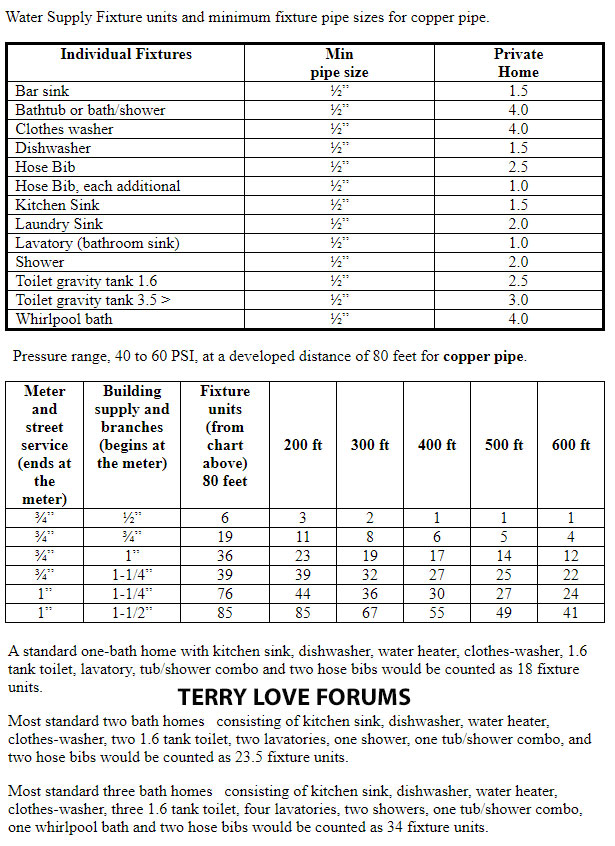JOHN H SULLIVAN
New Member
Mom lived in a two story house on a community well until she died last year; the well house is sixty feet away. A psi gauge on the galvanized 1" diameter inlet on the first floor reads 66 psi. The first floor toilet, sink, and shower have acceptable volume and one can take a shower for five minutes with acceptable water flow. The upstairs sink has acceptable flow, but the upstairs toilet and shower has very low flow volume. I have replaced the upstairs toilet inlet float valve and cleaned all the fixture aerators. When I flush the upstairs toilet, the psi gauge decreases to 10 psi until the toilet tank fills in about three minutes. The guy across the street, who is on the same community well, installed a well pressure tank on his community well inlet, and he says that it fixed his low water flow problem. This neighbor does not have a booster pump connected to the tank, just the pressurized tank. As most tanks are precharged at 28 psi, I suppose that the community well's 66psi would fill the pressure tank when water is not being used, and when water is being used, the tank's water capacity and 28psi would increase the upstairs pressure and allow a five minute upstairs shower. Before I spend the $400 for a 86 gallon pressure tank, does somebody who knows what they are doing have any insight on my low flow second floor water fixtures? I have spent about three hours on the inner-webs researching this to no avail and although I have installed 20 tanks as a landlord, I really dont understand the basic physics.

